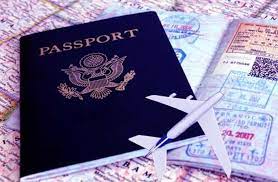Welcome, wanderlust seekers! Are you ready for an unforgettable adventure in the enchanting land of India? Look no further, because we’ve got your ticket to this mesmerizing country right here. In our comprehensive guide to obtaining a thirty (30) days Indian visa, we’ll take you on a journey through the application process, providing valuable tips and insider knowledge along the way. So buckle up and get ready to immerse yourself in the vibrant cultures, ancient traditions, and breathtaking landscapes that await you in Incredible India – all with the help of your very own thirty-day visa!
Introduction to the Indian Visa Application Process
Obtaining an Indian visa is a necessary step for most travelers who wish to visit India. With its vibrant culture, rich history, and breathtaking landscapes, India has become a popular tourist destination in recent years. The process of applying for an Indian visa may seem daunting at first, but with the right information and guidance, it can be a smooth and hassle-free experience.
In this section, we will provide you with a comprehensive guide to understanding the Indian visa application process. This includes all the necessary steps that you need to take before and during your application, as well as important tips and guidelines to ensure a successful outcome.
Types of Indian Visas
The first step in the application process is determining which type of visa you need. The Indian government offers various types of visas depending on the purpose of your visit. Here are some common types:
- Tourist Visa – This visa is issued for tourism purposes such as sightseeing, visiting friends or relatives, attending yoga/meditation retreats or short-term courses.
- Business Visa – This visa is issued for business-related activities such as attending meetings, conferences or trade fairs.
- Medical Visa – This visa is issued for medical treatment in India.
- Employment Visa – This visa is issued for individuals who have secured employment in an Indian company or organization.
- Student Visa – This visa is issued for individuals who wish to study at recognized educational institutions in India. URGENT EMERGENCY INDIAN VISA
Benefits of Obtaining a 30-Day Indian Visa
Obtaining a 30-Day Indian Visa comes with numerous benefits that make it a convenient and worthwhile option for travelers. In this section, we will explore the various advantages of choosing this type of visa.
- Flexibility in Duration:
One of the main benefits of obtaining a 30-Day Indian Visa is the flexibility it offers in terms of duration. As the name suggests, this visa allows travelers to stay in India for up to 30 days, providing them with enough time to explore the country without feeling rushed or limited by their visa’s validity period.
- Multiple Entry:
The 30-Day Indian Visa also allows multiple entries within its validity period, which means travelers can enter and exit India as many times as they want within the 30-day period. This is particularly beneficial for those who plan on visiting neighboring countries during their trip or need to make multiple trips to India within a short span of time.
- Easy Application Process:
Obtaining a 30-Day Indian Visa is relatively easy compared to other types of visas. The application process can be completed online, saving travelers from having to physically visit an embassy or consulate. The e-visa system has made it much more convenient and efficient for tourists to apply for an Indian visa.
- Quick Processing Time:
The processing time for a 30-Day Indian Visa is significantly shorter than traditional visas. In most cases, the e-visa is processed and approved within three business days, making it perfect for last-minute travel plans or
Step-by-Step Guide to Applying for an Indian Visa
- Step 1: Determine the Type of Visa You Need
The first step in applying for an Indian visa is to determine what type of visa you need based on the purpose of your visit. India offers various types of visas such as tourist, business, employment, student, and medical visas. Each visa has its own requirements and limitations, so make sure to carefully assess which one suits your needs.
- Step 2: Gather Required Documents
Once you have determined the type of visa you need, gather all the necessary documents for your application. This may include a valid passport with at least six months’ validity remaining, recent passport-sized photographs, flight itinerary or ticket reservation, proof of accommodation in India, and any relevant supporting documents depending on the type of visa you are applying for.
- Step 3: Fill out the Online Application Form
All Indian visa applications must be filled out online through the Indian government’s official website – https://indianvisaonline.gov.in/. The form is user-friendly and will guide you through each section step-by-step. Make sure to double-check all information before submitting as any mistakes can delay or even reject your application.
- Step 4: Pay Visa Fees
After completing the online application form, you will need to pay the required visa fees through a secure online payment gateway using a credit/debit card or internet banking. The fee amount varies depending on nationality and type/duration of visa applied for.

